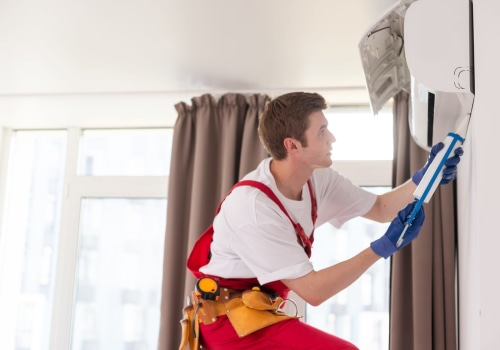Fire safety is a top concern for homeowners, particularly those living in areas prone to wildfires or where building regulations require enhanced fire resistance. Installing fire-proof replacement windows and doors can be an essential measure to protect your home and its occupants from the devastating effects of fire. These specially designed components are engineered to withstand extreme temperatures, preventing flames from spreading and protecting the structural integrity of the home. In addition to enhancing safety, fire-proof windows and doors can improve the overall energy efficiency and security of a home. This article will explore the installation techniques for fire-proof windows and doors, ensuring that they provide maximum protection while maintaining functionality and aesthetics.
Why Fire-Proof Windows and Doors?
Fire-proof windows and doors are constructed with materials that resist the heat and flames of a fire, allowing more time for evacuation and reducing the spread of fire between rooms or to neighboring properties. Traditional windows, made of regular glass, can shatter or melt when exposed to high temperatures, while standard wooden or vinyl doors can burn easily, allowing fire to enter the home.
Fire-rated glass used in windows can withstand temperatures of up to 1,000°F for extended periods. Similarly, fire-rated doors are constructed using materials like steel, fiberglass, or specially treated wood to endure high heat without losing their structural integrity. In the event of a fire, these windows and doors can help to compartmentalize the fire, containing it to one area and giving first responders more time to put out the flames.
Installation Techniques for Fire-Proof Windows
The installation of fire-proof replacement windows requires special attention to ensure they perform as intended during a fire. Proper installation not only enhances fire resistance but also maintains the energy efficiency and weatherproofing of the home.
1. Choosing the Right Frame Materials:Fire-proof windows often come with frames made from non-combustible materials such as steel, aluminum, or fiberglass. These materials can withstand high temperatures without warping or melting, ensuring that the window remains intact during a fire. When installing fire-rated windows, it's crucial to ensure that the frame materials match the fire-resistance rating of the glass.
2. Using Fire-Rated Glass:The glass used in fire-proof windows is typically either tempered or made from multiple layers of glass with an intumescent interlayer. This interlayer expands when exposed to heat, providing additional protection against flames and smoke. Installation involves ensuring a tight seal around the glass to prevent any gaps that could allow heat or fire to penetrate. Installers must follow manufacturer specifications for installing fire-rated glass to maintain its fire resistance.
3. Proper Sealing and Caulking:One of the most critical steps in installing fire-proof windows is ensuring that the window is adequately sealed. Fire-resistant caulking and sealants should be used around the window frame to prevent heat transfer and stop flames from creeping through small gaps. Regular caulk will not withstand the high temperatures of a fire, so it's essential to use products specifically designed for fire-rated windows.
4. Ensuring Adequate Ventilation:Fire-proof windows often need to meet specific building codes related to ventilation. While these windows are designed to be more airtight, they should still allow for proper ventilation to prevent moisture buildup and maintain energy efficiency. When installing, make sure the windows meet the required ventilation standards without compromising their fire-proof capabilities.
Installation Techniques for Fire-Proof Doors
Installing fire-proof doors is equally important, as doors serve as critical barriers between rooms and hallways, potentially preventing the spread of fire and smoke.
1. Selecting the Right Fire-Rated Door:Fire-proof doors come in a range of ratings, typically 20-minute, 60-minute, or 90-minute fire resistance. The door’s rating should correspond to the level of protection required, which is determined by building codes or the homeowner’s specific needs. These doors are usually made of steel, solid core wood, or fiberglass, with fire-resistant coatings or internal cores to enhance protection.
2. Fire-Rated Door Frames:Just like with windows, the frame of the door plays a crucial role in its fire resistance. Steel frames are commonly used for fire-proof doors as they can withstand extreme heat without warping. Installation involves securing the frame tightly to the wall and using fire-rated hinges and hardware to ensure the door operates properly during an emergency. Any gaps between the door and frame should be sealed with fire-resistant gaskets or intumescent strips.
3. Installing Fire-Proof Seals and Thresholds:Fire-rated doors require special seals and thresholds to prevent fire, smoke, and heat from passing through. Intumescent seals around the door edges expand when exposed to heat, creating an airtight barrier. Installing these seals correctly is vital for maximizing the door’s fire-resistance. Additionally, thresholds at the bottom of the door should be fire-resistant and fit snugly to the floor to block any gaps.
4. Proper Alignment and Hardware Installation:Fire-proof doors are typically heavier than standard doors, so it’s important to use heavy-duty hardware that can support the weight of the door and maintain its fire-proof integrity. Fire-rated hinges, latches, and closers should be installed to ensure smooth operation. Any hardware that penetrates the door, such as locks or handles, should also be fire-rated to avoid compromising the door’s performance in a fire.
Conclusion: Ensuring Proper Installation for Maximum Protection
Installing fire-proof windows and doors is a critical investment in protecting your home and family from the threat of fire. Proper installation techniques are essential to ensure these components perform effectively in an emergency. From selecting the right materials to ensuring airtight seals and using fire-rated hardware, every step of the installation process must be done carefully to meet fire safety standards. Consulting with professionals like All County Roofing Company ensures that your fire-proof windows and doors are installed correctly, giving you peace of mind knowing that your home is better equipped to withstand a fire. By paying attention to these details, homeowners can protect their property while maintaining aesthetic appeal and functionality.







